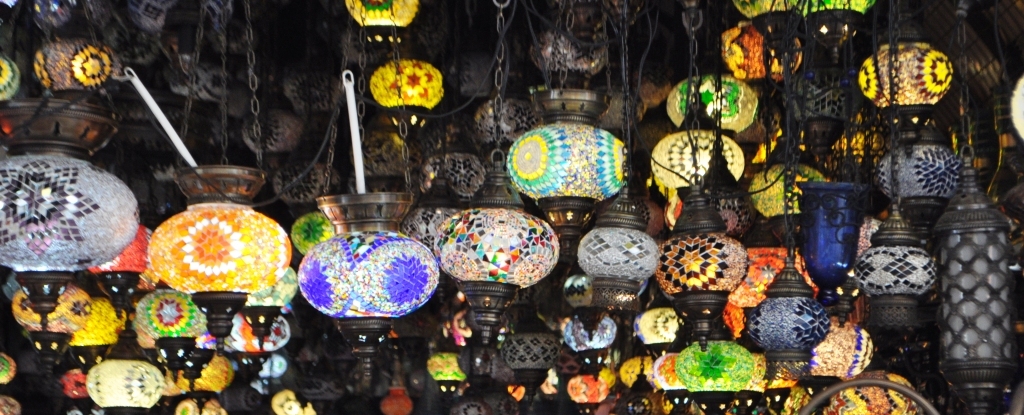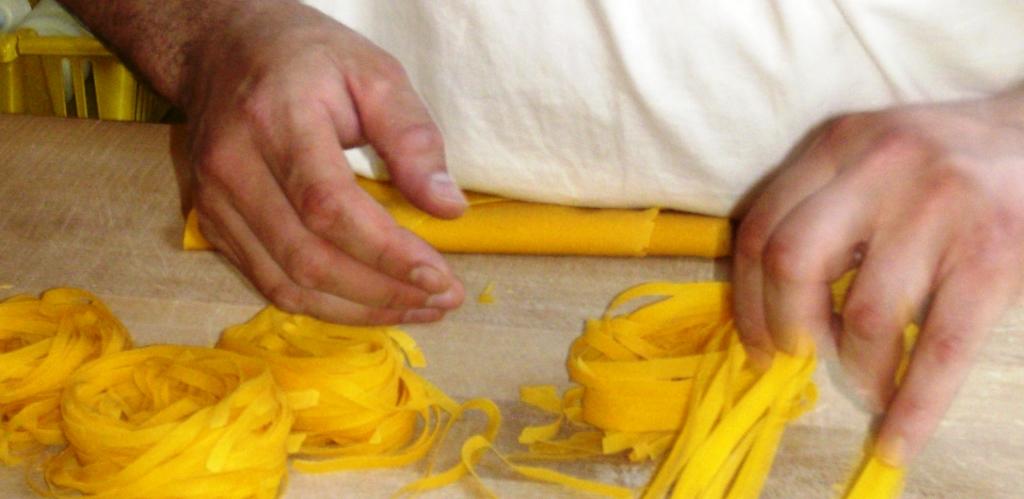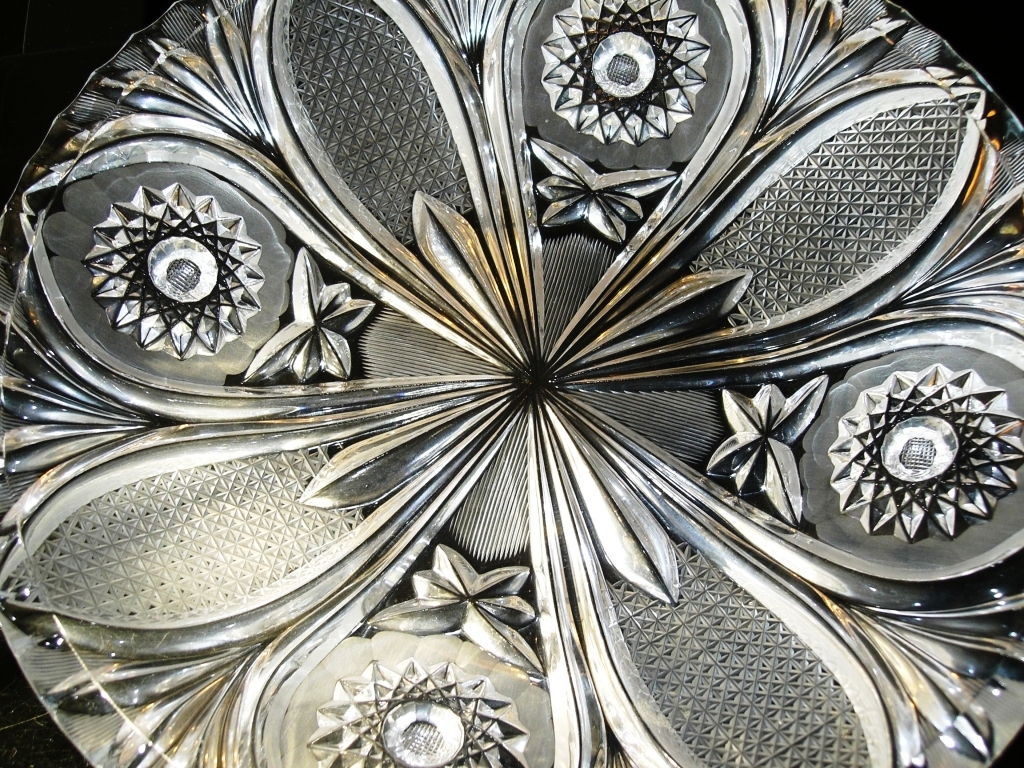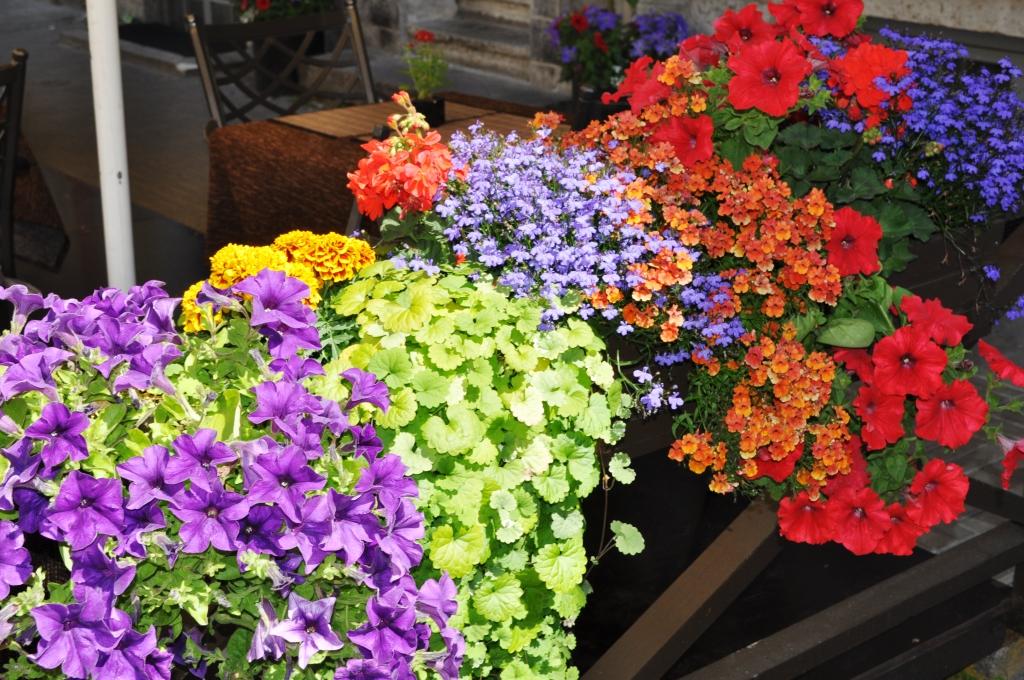Shops selling cell phones sit next to shops selling hand-made carpets, the kind that were once used by nomadic tribes living in tents in the desert. Bright piles of pungent spices send competing aromas drifting toward a store selling gold jewelry, seemingly by the pound. Colored glass lamps catch sunlight shining into a storefront window and throw it back to the passersby in eyefuls of greens, blues, golds, and reds. And the Nazar Boncugu — the ubiquitous Turkish eye symbol — gazes protectively over everything.
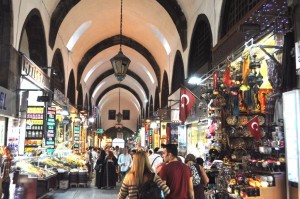
I want to buy one of everything. Overwhelmed, I do what I usually do when faced with insurmountable choices: I buy food, in this case, a pound of Turkish delight, which I chose piece by piece, one flavor at a time.
Sitting at the exact intersection of Europe and Asia, Istanbul is truly all things to all people: a jumbled muddle of grand palaces, churches-turned-mosques, five star hotels, delicate minarets, crowded shipping lanes, bustling markets and winding back-alley streets that no one can name — exoticism and familiarity colliding against each other every which way you look.
In Your Bucket Because…
- You can get all your souvenir and gift shopping done at once.
- You want to practice your bargaining skills in one of the world’s most historic shopping centers.
- By some measures, it is the most visited market in the world.
- Good for shoppers of all budgets.
Yet, despite being such a complex, ancient, cultural collision zone, Istanbul is remarkably easy for the casual tourist to navigate. Most of the city’s top attractions are conveniently clustered together atop a hill in the Sultanahmet — the old city — where the unmistakable landmarks of the Blue Mosque and the Hagia Sophia preside. The famed shopping markets are an easy walk or a short tram ride away.
Where to Shop in Istanbul
The city’s two best-known shopping areas are the Spice Market and the Grand Bazaar. Both are located between the Sultanhamet and the Golden Horn, where tourists line up for boat trips to the Bosphorus Strait and the Asian side. Additionally, around the Sultanahmet, you’ll find plenty of of street stalls hawking everything from water pipes to postcards, souvenir guidebooks to headscarves.
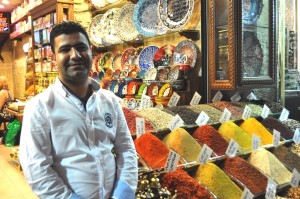
The original name of the Spice Market is the “Egyptian Market, ” which gives an inkling of history here: originally named for its trade with Egypt, the spice market has a 350-year history of foreigners coming to buy and sell. International trade with the near East has always been about spices, along with other exotic foodstuffs:: Greek mastic, Indian curry, Chinese tea, Russian caviar. Today’s market is the same and more: In addition to spices — many grown in Turkey, such as black and red pepper, wild thyme, cumin, and Anatolian saffron — you can also buy nuts, Turkish coffee, Turkish delight, and dried fruits. along with non-food items, with stores selling everything from antique kitchen supplies to tacky souvenirs and cheap knock-offs.
The Grand Bazaar has an equally storied past. Dating from the 15th Century, it is one of the world’s first indoor shopping malls. The statistics alone are befuddling: Its 3,000 shops employ some 26,000 workers and are spread out over 61 covered streets. Between 250,000 and 400,000 people visit every single day, shopping for or gawking at souvenirs, jewelry, gold, furniture, carpets, leather goods, and a thousand other items, many of which you may never have imagined.
What to Buy
So, among this chaotic cacophony, the pushy merchants, the explosion of colors and scents: What makes the grade as a worthwhile souvenir?

The “Blue Eye:” One of the most ubiquitous symbols of Turkey, the “Nazar Boncugu,” also known as the evil eye, protects its owner against envy and bad will. Eyes come as keychain-sized charms or can be worked into jewelry or used in larger more elaborate ornaments. Make sure you pack it well so it doesn’t crack or break: A Turkish friend told me that a broken charm has done its job and must be discarded because, having broken, it can now bring harm to the owner. I bought a large Christmas ornament-sized metal charm with several eyes worked into it for about ten euros. Smaller charms are even less expensive — not bad for all that protection.
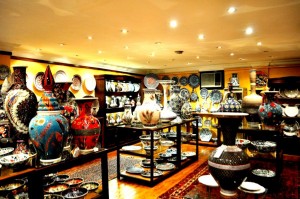
Ceramics: Traditional mosaic designs with intricate patterns are the the hallmark of Turkish ceramics, used in everything from coffee sets to decorative tiles for Mosques. The patterns, often handed down from generation to generation, feature complex geometric motifs or elements of nature, often in cobalt, turquoise, and aubergine hues. With an exotic pedigree that starts with the Uighurs of the 8th and 9th centuries, Turkish ceramics have been influenced first by Karakhanid, Ghaznavid, and Iranian Seljuk art, then later, by traditions farther afield, such as the Ming dynasty pottery that made its way to the Ottoman court in the 15th and 16th centuries. Today, you’ll see ceramic jugs, bowls, and plates in museums as well as in fine shops and modest street stalls. Quality varies widely between machine-made pieces, hand made pieces, pieces containing a higher amount of crystal, and low-grade mass-market pieces made in China (today’s imports being of rather different quality than their Ming forebears). The range in quality is reflected by an equally wide range in price: Several euros to several thousand for a large intricate jug or plate.
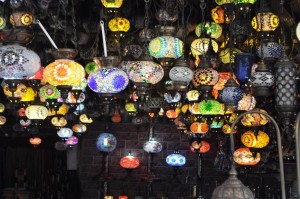
Glass Lamps: The multi-colored glass lamps are another common offering in the tourist markets, and range in price from a few dollars for a small candle holder to a hundred or more euros for a multi-piece electric candelabra. (Americans should note that these would require rewiring or using a converter for use in American homes.)
Leather: Handmade Turkish leather goods are typically made from sheep or lamb. stanbul is the center of the leather trade, with all manner of hand-made leather clothing — vests, dresses, jackets, hats, gloves — available, along with accessories such as belts, purses, and wallets. It is possible to have items custom made.
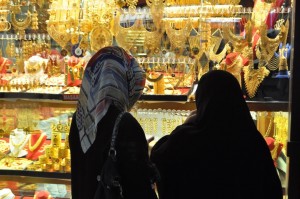
Jewelry: Gold is sold in the Grand Bazaar; prices are largely based on weight: Gold here is regarded as an investment, and workmanship is a secondary issue. Some travelers report getting good prices on antique jewelry.
Turkish Delight: This confection, also called lokum, is a gel, sometimes flavored with mastic (a piney resin), mint, rosewater, or lemon. Chopped dates, pistachios, hazelnuts, or walnuts give ti added flavor and texture, and it is dusted with powdered sugar. It was said to be a favorite of the ladies of Turkish harems, and became fashionable in European high society as well. It is sold pretty much everywhere you look, including the airports, but quality varies. In the Spice Market, you’ll be able to sample small pieces and choose how many of which flavors you want for your own customized box.
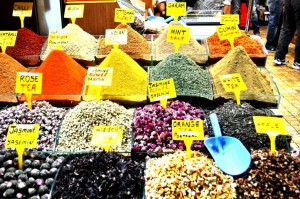
Spices: Spices are, of course, one of the foundations of trade between east and west, and you’ll find them A guide can point you to better shops: They probably get a commission, but you might be spared bringing home spices that are substandard or have spoiled. The shops selling loose spices offer better quality. Also look for locals shopping,rather than tourists buying prepackaged gift boxes.
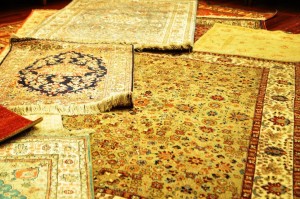
Carpets: By far, the traditional crème de la crème of Turkish souvenirs is a genuine Turkish carpet, either knotted or woven. If you’re a serious buyer, educate yourself about designs and prices before you find yourself in a carpet shop, where the sales pressure is skilled and unrelenting. My own trip to a Turkish carpet shop was marked by the required cup of tea, a demonstration of some of the elements of Turkish carpet making, and a high pressure sales pitch. Perhaps the best way to dress for this encounter is in your rattiest travel clothes with the pockets turned inside out. I found the asking prices at one carpet store to be comparable to prices at carpet specialty stores in suburban New York, so be prepared to bargain hard.
Practicalities
- Guides often get a commission for steering you to particular sellers, so don’t expect objective recommendations.
- The general recommendation for bargaining is to start at half the asked price and go up from there — how high depends on your skill and desire.
- The Grand Bazaar is closed on Sundays.
- Whenever possible shop in specialty shops: For example, buy Turkish Delight at a Turkish Delight shop, not at the place that sells cheese, caviar, and souvenir scarves.
- Shops in the Spice Market are all numbered — useful if you need to meet someone.
- Ask for vacuum packing for food items. Most specialty shops can do this for you.
- Vendors can be aggressive and have a hundred surprising come-on phrases to engage you. Don’t be afraid to keep walking: While it’s an American habit to return a friendly greeting, in this case, that can mire you in a sales conversation you don’t want to have.
